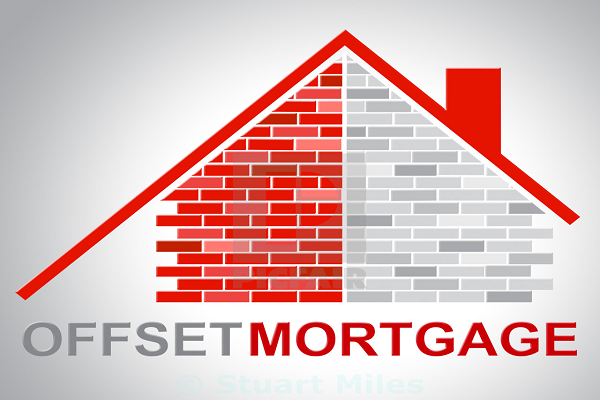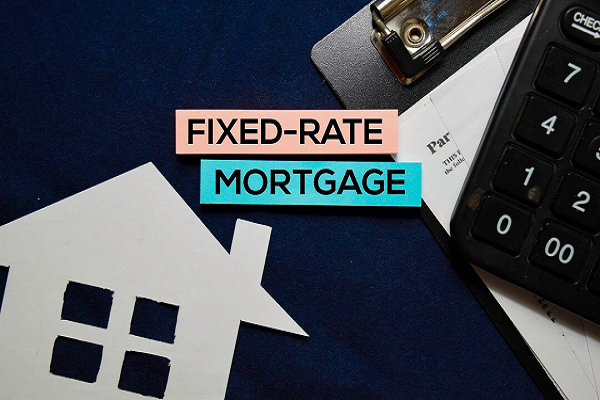77% of Self-Employed Workers Concerned About Mortgage Eligibility
As mainstream lenders continue to tighten their lending practices, millions of prospective borrowers are finding themselves excluded almost entirely from consideration. According to a new study conducted by Pepper Money, more than three-quarters of self-employed workers now fear they will be unable to qualify for a mortgage.
Of the 6,000 people surveyed, 77% said that self-employed status can make it difficult or impossible to obtain mortgage approval. According to Pepper Money, the issue lies in the fact that most mainstream lenders expect to see three continuous years of profitability and financial stability when processing mortgage applications from self-employed workers.
Given how the vast majority of self-employed workers were adversely affected by COVID-19 restrictions, comparatively few are able to provide such verification of consistent financial performance.
Even though self-employed workers have made significantly more money this year than in the past two years, they are still finding themselves counted out of the running by many mainstream lenders.
The study also found that 20% of self-employed people say that their businesses made more than 10% more profit in the last year than the previous two years.
Seeking support beyond the high street
Speaking on behalf of Pepper Money, sales director Paul Adams advised those who may struggle to qualify for conventional products to consider the options available beyond mainstream high-street banks.
“The self-employed play a vital role in the country’s economy, and the respondents to the survey are largely correct in that it can sometimes be more difficult to secure a mortgage as a self-employed person, but it doesn’t have to be that way,” he said.
“There are many lenders that specialise in lending to self-employed customers, with criteria and processes that are designed to meet the particular circumstances of self-employment, including the ability to lend on the most recent year’s figures, which can make an important difference in helping the self-employed achieve the loan size they deserve.”
Mr. Adams also said that the benefits of specialist lending are by no means restricted exclusively to self-employed individuals.
“It’s not just the self-employed who can benefit from this specialist approach,” he added.
“Our research found a quarter of all workers earn variable income, either from overtime or bonuses, and the ability to consider this additional income is often an important factor in helping them achieve the mortgage they deserve.”
More competitive mortgage rates to come?
Looking at the bigger picture, confidence is growing among analysts that a gradual fall in average mortgage rates will creep into the equation over the next 12 months. Speaking on behalf of Octane Capital, chief executive Jonathan Samuels said that the average mortgage payer could see a reduction in their monthly repayments of as much as £188 by this time next year.
“Opting for a variable-rate mortgage will always be a gamble, as it leaves you susceptible to an immediate change in the cost of your mortgage repayments depending on the base rate set by the Bank of England,” he said.
“For many homebuyers, this gamble has largely paid off in recent years, with interest rates remaining at extreme lows for a prolonged period. However, so far in 2022, the cost of a variable-rate mortgage has continued to climb in line with interest rates, and last week we saw the largest single jump in over 30 years.”
“This will add a considerable amount to the monthly repayment of those opting for, or already on, a variable rate, and given the backdrop of the current cost of living crisis, it really couldn’t have come at a worse time.” “The good news is that we do expect the economy to settle to some extent in 2023, and while we don’t believe we will see a return to the record levels of affordability enjoyed previously, the monthly cost of repaying a mortgage should drop below the levels currently being seen across the market.”
Popularity of “Offset” Mortgage Grows as Homeowners Strive to Make Savings
Faced with the prospect of ever-increasing mortgage payments and skyrocketing energy bills, households across the UK are being forced to explore all available options to make meaningful savings. Remortgaging to reduce interest rates for a fixed period of time is a popular option, but genuinely cost-effective remortgage deals are becoming increasingly thin on the ground.
Elsewhere, others are turning to a lesser-known facility to reduce their monthly payments and bring their mortgage rates down to a more manageable level. The popularity of “offset” mortgages is growing at a rate not seen in some time as homeowners strive to do everything within their power to make ends meet.
New figures suggest that applications for offset mortgage facilities increased by around 400% in September and October, compared to the same time last year. An offset mortgage provides homeowners with the opportunity to use their savings to “offset” some of their mortgage costs, though, for this reason, the facility is open only to those who have considerable savings at their disposal.
What is an offset mortgage?
With an offset mortgage, the borrower is required to deposit a chunk of their savings into an account that is linked directly to their mortgage. This sum of money is then used to offset the remaining balance on their mortgage, meaning that subsequent interest payments are calculated on the balance of the mortgage less the balance of their linked savings.
This provides those with considerable on-hand savings with the opportunity to significantly reduce their mortgage term and, in doing so, access cheaper rates. For example, a standard mortgage currently attaches an interest rate in the region of 6.5%, whereas the average two-year fixed-rate offset deal charges a much lower 5.5%.
In practice, a mortgage payer with a 25-year £400,000 mortgage charged at 5.5% who offsets £40,000 with their savings could save more than £98,000 over the life of the loan. They would also repay their mortgage three years and three months earlier.
But while the popularity of offset mortgages is growing, their availability remains comparatively sparse on the High Street. More mortgage payers are looking to offset their loans, but figures from Moneyfacts suggest that the number of offset mortgage facilities available has fallen by as much as two-thirds over the past 12 months.
Today, there are just over 50 offset deals available on the market as a whole.
“Lots of our clients like the flexibility these deals provide, especially if they are planning to help a family member on the property ladder and need access to a lump sum for the deposit or they have upcoming development works,” said Aaron Strutt, of broker Trinity Financial.
“Others like to have the money ready to pay school fees, and business owners like to offset mortgages when they receive lump-sum payments.”
Millions of mortgage payers face a three-fold interest increase
While analysts now believe that interest rates will peak at lower-than-expected highs next year, millions are facing the near-inevitable prospect of a massive rise in their monthly mortgage payments.
According to a study carried out by Morgan Stanley, around 40% of introductory mortgage deals are set to expire within the next 12 months. This will leave those exiting low introductory rates facing the prospect of interest rates up to three times higher than they are currently paying. As it stands, the current rate payable on a two-year fixed mortgage (following any introductory rate offers) is around 6.55%.
UK-Based Lender Receives Authorisation to Offer 50-Year Fixed-Rate Mortgages
Next March, the UK’s Help to Buy scheme will be permanently withdrawn. Introduced in 2013, the programme was brought in as one of several measures to restart the housing market in the wake of the financial crisis of 2008.
Help to Buy gives homebuyers the opportunity to purchase new-build homes with a deposit of just 5%. As the average deposit requirements of most major lenders fall between 10% and 20%, Help to Buy offers a lifeline for those who would otherwise struggle to come up with this kind of money.
5% mortgages are in comparatively short supply on the High Street and are often accompanied by highly selective eligibility requirements, which is precisely why the introduction of an all-new mortgage at Perenna could come as welcome news to anyone with affordability concerns.
The UK’s first and only 50-year fixed-rate mortgage
Perenna reported this week that a commission has been granted by UK regulators to offer a fixed-rate mortgage over a term of 50 years. The product will be initially introduced as a 30-year fixed-rate mortgage, after which further options will be rolled out for up to five decades.
These products could prove highly disruptive for the sector, given how most major lenders offer fixed-rate mortgages over a maximum of 10 years.
Importantly, Perenna’s long-term fixed-rate mortgages will be offered to first-time buyers in the form of a 95% LTV loan, requiring a deposit payment of just 5%. Homeowners looking to relocate or remortgage will also be eligible for Perenna’s long-term fixed-rate products, enabling them to lock in competitive rates of interest for the life of their loan.
Benefits for private borrowers and businesses
Speaking on behalf of Perenna, CEO and founder Arjan Verbeek highlighted the potential benefits of these new long-term loans for private borrowers and businesses alike.
“It is very exciting to be a bank that is authorised with restrictions, and it is a major milestone for the team. The UK financial infrastructure requires significant innovation to get growth back and reduce inequality. Perenna will be the blueprint to deliver this for mortgages as well as SMEs and infrastructure,” he said.
“Perenna will support consumers with buying their first homes, moving home, supporting themselves in retirement, and helping the transition to net zero. Perenna looks forward to working with other initiatives to increase private sector investment in the real economy and address the structural challenges we face.”
More details are expected to be confirmed by Perenna ahead of the launch of the new products, which are expected to offer 30- to 50-year fixed interest rates of around 4% to 5%. However, this could be significantly influenced by economic shifts in the interim and the general state of the mortgage market at the time.
The approval of the new product comes as the Bank of England once again raises interest rates in an effort to quell inflation, which is now at a 40-year high. Further interest rate hikes are almost certainly on the cards, with inflation said to peak at 12% or higher in the New Year.
Average house prices continue to break records across the UK, with the biggest annual price increases of all having been recorded in London. Even as the UK’s escalating living-cost crisis was hitting households hard, the average price of a home in London hit an astonishing £526,183 in May, more than 8% up on the previous year.
Detached homes in London saw the biggest annual price growth of all, up just over 11% to reach £1,082,09, compared to £973,866 a year earlier.
“With the Bank of England putting up interest rates more than once this year, many house hunters have also established a stronger sense of urgency to buy before further rate hikes,” commented Richard Davies, managing director of London agents Chesterton’s.
“Our branches receive inquiries from families, couples, and investors, but, particularly post-pandemic, we are seeing an uplift in the number of international students, international buyers, as well as office workers who require a pied-à-terre closer to work.”
What is the Difference Between a First and Second Charge Mortgage?
In order to understand how second-charge mortgages differ from first-charge mortgages, you need to consider the way home equity works.
For example, let’s say your home has a market value of £300,000 and you have £100,000 remaining on your original mortgage (your first-charge mortgage). You have built up £200,000 in equity in your home, i.e., the proportion of your home you own.
While continuing your monthly mortgage repayments as normal, you now have the option of taking out a second-charge mortgage (aka a second mortgage) against this equity. You may be able to borrow anything up to 85% LTV (loan to value) against your equity, meaning a maximum loan value of £170,000.
If you choose to do so, you will then have two mortgages secured against your home. Both require regular monthly repayments and carry the same risk of repossession if you fall into arrears.
What is the purpose of a second mortgage?
A second-charge mortgage can be a useful product for those who fall into the “asset-rich, cash-poor” bracket. Skyrocketing house prices have seen more UK homeowners than ever before become asset-rich over the past decade.
With the average UK house price now sitting at around £300,000, a second-charge mortgage can open the door to significant equity release at an affordable price.
Just a few of the most common reasons for taking out second mortgages include the following:
- Consolidating multiple debts to save money
- Funding for major home improvements and renovations
- Purchasing investment properties such as buy-to-let homes
- Helping family members get on the property ladder
- Buying cars and paying for holidays
- Funding new business start-up costs
With comparatively few restrictions, a second mortgage can be used for almost any legal purpose whatsoever.
What are the benefits of a second mortgage?
For those who are eligible for a second-charge mortgage, the main benefits are as follows:
- The potential to access a significant amount of money at a low rate of interest, repaid over a series of affordable monthly repayments
- A simpler and more cost-effective alternative to conventional equity release products with much greater flexibility
- There are no restrictions placed on how the funds are allocated, and there is the option of early repayment with some second mortgage products.
- Relaxed lending criteria, with loans available to applicants with poor credit and/or no formal proof of income.
Importantly, most second mortgage loans are bespoke financial products, tailored to meet the unique requirements of each applicant.
What are the drawbacks of a second mortgage?
On the downside, some of the potential disadvantages of second mortgage products are as follows:
- Interest rates vary significantly from one lender to the next, and additional costs may apply: arrangement fees, valuation fees, administration fees, broker fees, and so on.
- After taking out a second mortgage, you will have two mortgages secured against your home and will need to make two regular mortgage payments.
- Affordable second-charge mortgage products can be more difficult to access for those with poor credit, a history of bankruptcy, or self-employed status.
- If your home decreases in value and you are forced to sell it to repay your mortgages, the funds raised may not be sufficient to cover the full outstanding balance.
It is therefore essential to discuss all the potential pros and cons with your provider before applying for a secured loan.
How do you get a second mortgage?
Second-charge mortgages are available from a wide variety of major banks and specialist lenders. However, it is essential to apply exclusively to providers that are authorised and regulated by the Financial Conduct Authority (FCA).
The application process itself can be surprisingly straightforward, as the loan is technically issued against your equity, not the property itself. With all the essential paperwork and documentation in place, a second mortgage can be organised and accessed within a couple of weeks.
During this, you will be expected to provide evidence of your financial position, your employment status, your income level, any other major debts you are currently repaying, and so on.
Delays and disruptions may occur along the way, so it is advisable to get your application underway as soon as possible.
New Study Highlights Landlords’ Confidence in the UK’s Booming BTL Sector
In the face of an unprecedented living cost crisis and a looming economic downturn, the UK’s housing sector continues to go from strength to strength. New figures released by Handelsbanken indicate unwavering optimism in both residential and commercial property among investors looking to capitalise on skyrocketing demand for affordable homes and business units.
The figures from Handelsbanken suggest that almost 50% of professional landlords (those with a minimum of four properties in their portfolios) plan to invest in one or more properties over the next 12 months. Meanwhile, 35% said they would hold their portfolios at their current levels, while just 7% indicated their intention to liquidate one or more of their assets.
Handelsbanken’s first SME Landlord Survey also revealed that more than 85% of landlords are anticipating an increase in demand for residential property rentals over the coming year. Commercial property landlords also indicated optimism for the year ahead, with 63% predicting an increase in demand for commercial units.
Interestingly, 89% of the landlords who took part in the poll said they expect average rental yields to decrease slightly within the next 12 months.
Diversification is a priority for many landlords
73% of landlords indicated their intent to diversify their property portfolios going forward. Houses remain the biggest draw for landlords planning property purchases (66%), followed by 38% who plan to buy flats, 34% setting their sights on houses of multiple occupations, and 32% planning to purchase commercial retail units.
Meanwhile, London continues to gain the lion’s share of attention from landlords planning to diversify their portfolios. 53% said they intend to buy properties in and around London, followed by 40% looking to buy into the East of England, and 22% who see the East Midlands as the most attractive location to purchase new properties.
A resilient and buoyant market
Speaking on behalf of Handelsbanken, chief economist James Sproule highlighted how even the escalating living-cost crisis is having no major impact on the buoyancy of the UK property market.
“Recent house price growth shows how property has shown its resilience against economic doom and gloom and the cost-of-living squeeze,” he said.
“Landlords are anticipating that a shortage of rental properties will help keep prices buoyant, particularly as working patterns continue to adjust to the post-pandemic world and people seek to move back to big cities, particularly in popular areas such as London, which is also seen to be better placed to ride out the next series of economic challenges and opportunities.”
“Landlords went through a tough period following the COVID-19 pandemic, with residential property transactions falling by more than half and business investment contracting. But the sector has survived and is now looking forward.”
“The 2022–23 financial year is forecast to see a further softening in residential property transactions as vendors wait for the right buyer rather than accept any perception of loss in value.”
Buy-to-let investments boom
The figures suggest that, far from a decline, the withdrawal of the stamp duty holiday and lingering economic uncertainty have actually triggered a major spike in buy-to-let investment interest. Buy-to-let remains an attractive option for newcomers and established investors alike, due to the near certainty of generous rent yields and sky-high capital gains.
This is particularly true in and around London, where the latest Zoopla Rental Index pins the average monthly rent at a huge £1,698. That is more than 15% higher than the same time last year and is expected to continue climbing.
Remote and hybrid working models are sustaining high levels of demand for rental properties with private gardens and for those in proximity to public parks. While this continues as the new norm, investors will continue to set their sights on homework-friendly homes as uniquely attractive investment opportunities.
Over 30% of Brits Struggling to Meet Mortgage or Rental Obligations
The cost of living crisis is taking its toll on millions of UK citizens, with as many as one-third thought to be battling to pay their monthly rent or mortgage payments, with 3% falling behind with mortgage repayments.
Analysis performed by the Office of National Statistics between the 16th and 27th of March showed a 19% increase in the number of homeowners who had seen their mortgage repayment costs rise, whereas 34% of renters reported that their monthly rent had increased. The reason for the lower-than-expected number of people experiencing mortgage increases is due to the large number of homeowners being on fixed-rate mortgage deals and therefore protected from the increases in interest rates.
Homeowners showing to have defaulted on their payments remain low at 1%, but many are expecting that figure to rise if the cost of living and inflation, already at 7%, continue to increase.
Rosie Hooper, chartered financial planner at Quilter, said: “If finances are stretched even further and this difficulty becomes an impossibility, we could have a significant problem on our hands with thousands of people defaulting on their payments and potentially losing their homes.”
For anyone having serious concerns over whether they will be able to make their obligated repayments, Rosie had the following advice:
“If you feel that your mortgage is becoming unmanageable, then it’s important to talk to your lender as soon as possible,” she said.
“Burying your head in the sand is the worst course of action, although often seemingly the easiest in the short term.”
“There are a variety of ways lenders can help, and they will work with their customers to create payment plans that may be able to help ease the financial burden.”
With the cost of rental accommodation also on the rise, there is a concern that this will affect the first-time-buyer market, with many tenants only being able to meet their monthly rental payments, significantly reducing the chances of being able to save for a deposit to purchase a property.
Figures from the Office of National Statistics found that 43% of participants in the survey said that they are unlikely to be able to save any cash in the next year due to increased outgoings.
“This may further take the wind out of the sails of the housing market as fewer potential buyers reduce demand and house prices,” she explained.
“We are in for a tough few months or even years, but it is always best to seek help if you are struggling with your finances to avoid spiralling into debt.”
Bank of England Considers Withdrawing Mortgage Eligibility Test
Getting a mortgage and qualifying for a competitive deal looks set to become easier as the Bank of England prepares to withdraw its eligibility test.
A consultation has been launched by the Bank of England to determine whether the standard affordability test, launched in 2014 to protect households from excessive debt, is still necessary to safeguard the market from a potential crash.
As things stand, banks are not permitted to issue more than 15% of their total mortgage products at a multiple of more than 4.5 of the borrower’s household income. Stress tests must also be performed on prospective borrowers, based on the potential for a 3% interest rate increase to elevate their outgoings in the future.
Such regulations and recommendations are reviewed regularly by the bank’s Financial Policy Committee, which is now considering the potential impact of removing these mandatory eligibility tests. LTI ratio limits and standard affordability tests (already required by the Financial Conduct Authority) could be used instead as a simpler and more flexible alternative to the current system.
“The Financial Policy Committee has […] decided to maintain the LTI flow limit recommendation but has decided to consult on withdrawing its affordability test recommendation,” read the statement published by the Bank of England.
Commenting on the proposal, mortgage technical manager at mortgage broker John Charcol, Nicholas Mendes, highlighted how difficult it can be to predict even the immediate future of the mortgage lending landscape.
“Lenders will still need to ensure that mortgages remain affordable, but the repayments would be based on market expected interest rate movements in the next five years or a per cent increase on today’s rate, whichever is higher,” he said.
“Lenders could also choose to not make any changes, as predicting where rates could be in five years’ time seems almost impossible.”
Potential impact on property prices
In the short term, the reforms could result in mortgage customers being able to borrow more, which could have a temporary knock-on effect on house prices.
“This allows people to bid or increase their offers, and as a result, it risks competition against the same homeowners that would have been searching for the same properties before—but at higher values,” commented Mendes.
As things currently stand, the national average property price currently stands at around £265,000, with the average first-time buyer paying a deposit of just under £54,000.
Mr Mendes also raised concerns regarding potential issues affecting those on shared ownership schemes.
“Lenders are looking at implementing the ONS stats into affordability calculators more regularly, with lenders who have trialled it seeing the maximum borrowing reduction for homeowners,” said Mendes.
“This is a growing area of concern for those who are currently on shared ownership schemes, as based on potential future affordability modules, owners who were able to buy [based on previous calculators] wouldn’t be able to afford the borrowing that they originally took out.”
If the decision is made to withdraw the current affordability test, it may take up to 12 months for the changes to be fully implemented.
Home Loan vs. Mortgage: What’s the Difference?
Home loans and mortgages are almost always interpreted as the same thing.
You could argue that a mortgage is a type of home loan, given that it is a loan used to purchase a home. There are significant differences between the two in terms of their functions and intended applications.
A home loan is more restrictive with regard to how the funds can be used; a home loan can exclusively be used to cover the costs of buying or constructing a home. Conversely, a mortgage can be used for absolutely any purpose if the applicant meets the required criteria for the loan.
In addition, there are various different types of home loans that fall within the broader classification. Examples of this include commercial property loans, non-residential premises loans, construction loans, top-up home loans, home extension loans, home renovation loans, and so on.
Some types of home loans can be taken out alongside a mortgage as a means of funding a specific project. For example, you could take out a home extension loan to cover the costs of an extension. However, it would be expressly forbidden for the funds to be used for any other purpose. If you were to extend your current mortgage to generate capital, it could be used for any legal purpose.
The main differences between home loans and mortgage loans
To help clarify the confusion, what follows is a concise summary of the main properties of the two types of loans and how they differ:
Home loans
- A home loan is typically issued exclusively for the purchase or construction of a home and cannot be used for any other purpose.
- Home loans are typically issued with a comparatively high LTV, often covering as much as 90% of the property’s purchase or construction costs.
- Cost-effectiveness varies significantly from one lender to the next; interest rates on home loans can be lower than those of a conventional mortgage.
- Borrowing costs can also differ significantly between lenders, typically including an initial processing fee of 0.8% to 1.2% of the total value of the loan.
- Flexible repayment terms are available over the course of anything from 10 to 30 years, in accordance with the preference of the borrower.
Mortgage loans
- The main difference with a mortgage is that the funds can be used in any way the borrower likes. The loan is issued using their home as collateral in the same way, but there are fewer restrictions placed on how the money can be spent.
- A typical mortgage will be issued with an LTV of around 70% to 80% of the market value of the property. Some lenders have begun once again offering mortgages with an LTV of 90% or even 95% to those who meet the required criteria.
- There are major differences from one lender to the next, but the interest rate payable on a mortgage is usually around 1% to 3% higher than that of a comparable home loan.
- The same also applies to processing fees, which, with the typical mortgage, will be around 1.5% of the total value of the loan.
- With a mortgage, it is usually easier to extend the size of the loan and borrow more money should the initial amount be insufficient to cover all costs and requirements.
Whatever your objectives for the funds you need, it is important to seek independent broker support before applying. This will help you not only determine the most cost-effective option available but also get the best possible deal from an extensive panel of specialist lenders.
If you would like to learn more about the differences between mortgages and home loans, contact a member of the team today.




 0116 402 7982
0116 402 7982






